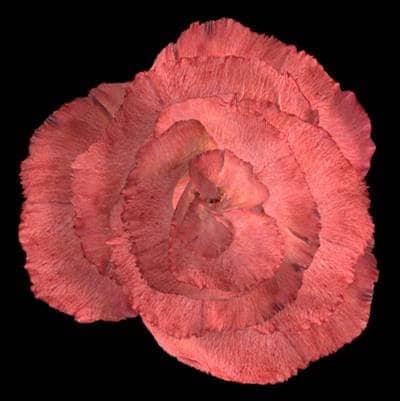
The San Jose Museum of Art announced it will showcase a sampling of seven new media art works from its permanent collection in Vital Signs: New Media from the Permanent Collection, on view June 12, 2010, through February 6, 2011. Selected works by Jim Campbell, Bill Viola, Andrea Ackerman, and Gail Wight reflect the artists’ shared interest in describing familiar signs of life, either human life or the life of the fragile natural world, in the technological terms of new media.
“The San Jose Museum of Art has long been committed to presenting and collecting experimental work in new media, particularly work by the Bay Area’s aesthetic innovators,” said Susan Krane, Oshman Executive Director of the San Jose Museum of Art. “This exhibition, which also coincides with the 2010 01SJ Biennial, highlights this growing part of SJMA’s permanent collection and explores the artists’ deeply humanistic reflections on life, death, and nature.”
Vital Signs is organized by Jodi Throckmorton, curatorial assistant. “Some of these artists mimic signs of life—a breath or a heartbeat—and address issues of life and death. Others recall the earth’s essential cycles of life, such as ocean waves and seasonal rhythms.” said Throckmorton. “Vital signs are fragile whether they are human or organic. The resulting works have a surprisingly intimate, emotional effect.”
Jim Campbell makes innovative use of custom electronics to address complicated issues of memory and reality. In Portrait of My Father (1994-95), a photograph of Campbell’s father appears and disappears in sync with a recording of the artist’s own beating heart. In Portrait of My Mother (1996), the glass encasing a photograph of Campbell’s mother fogs and clears in rhythm with the artist’s recorded breath. In Wave Modulation and Variation (2003), Campbell uses video footage of ocean waves to generate a meditative pattern of light and motion. Based in San Francisco, Campbell often obscures the border between fact and perception.
Bill Viola’s Memoria (2000), is a luminous portrait of human suffering, a kind of digital Veronica’s veil of video projected onto silk. In Rose Breathing (2003), Andrea Ackerman uses 3-D computer animation to create a large pink rose that opens and closes to the sound of steady breathing. Conceptual artist and Stanford University associate professor Gail Wight uses time-lapse video of slime mold in Creep (2004). The work focuses the viewer’s attention on the unexpected abstract beauty of biological structures and primitive organisms. The most recent acquisition in Vital Signs is Wight’s installation Center of Gravity (2008), a forest of eight-foot-long poles lined with photographs of fragile ecosystems suffering from climate change. Suspended from the ceiling, the glowing tubes resemble geological core samples.
Programs at the San Jose Museum of Art are generously supported by operating support from the City of San José, the David and Lucile Packard Foundation, the John S. and James L. Knight Foundation, and the Koret Foundation; and by a Cultural Affairs grant from the City of San José.


